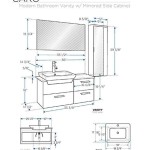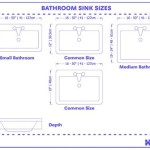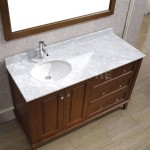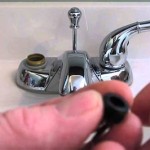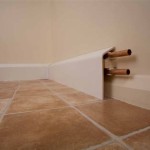Essential Aspects of Bathroom Sink Lose Water Pressure
Maintaining optimal water pressure in your bathroom sink is crucial for daily tasks such as handwashing, brushing teeth, and cleaning. When you notice a sudden drop in water pressure, it can be frustrating and inconvenient. Understanding the essential aspects of why a bathroom sink loses water pressure can help you troubleshoot and resolve the issue effectively. This article will delve into the key factors that influence water pressure in your bathroom sink and provide guidance on how to address them.
The part of speech for "Bathroom Sink Lose Water Pressure" is a noun phrase. This phrase acts as a subject, describing a specific issue related to bathroom sinks. To create valuable content, we will focus on the essential aspects that contribute to this problem and provide actionable solutions.
1. Clogged Aerator or Faucet
The aerator or faucet can become clogged due to mineral deposits, debris, or sediment. These blockages restrict the flow of water, resulting in reduced pressure. To resolve this, remove the aerator and clean it with vinegar or a descaling solution. If the aerator is damaged, you may need to replace it.
2. Faulty Cartridge or Valve
The cartridge or valve inside the faucet controls the water flow. Over time, these components can wear out or become defective, leading to water pressure problems. Replacing the cartridge or valve can restore normal water pressure.
3. Water Pressure Regulator Issue
A water pressure regulator is installed to regulate the water pressure throughout your home. If the regulator malfunctions or becomes clogged, it can affect the water pressure in specific fixtures, including your bathroom sink. Adjusting or replacing the regulator may solve the issue.
4. Water Shutoff Valve
The water shutoff valve under your bathroom sink can partially close, restricting water flow. Check the valve and ensure it is fully open. If the valve is faulty, it may need to be replaced.
5. Corroded Pipes
Corrosion in the pipes leading to your bathroom sink can cause narrowing of the passageways, leading to reduced water pressure. This is more common in older homes with copper or galvanized steel pipes. In such cases, replacing the affected pipes may be necessary.
6. Low City Water Pressure
In some cases, the drop in water pressure may not be related to your bathroom sink but rather due to low city water pressure. Contact your local water utility to confirm if there are any scheduled maintenance or repairs that could be affecting the water pressure in your area.
Conclusion
Understanding the essential aspects of why a bathroom sink loses water pressure is vital for effective troubleshooting. By considering factors such as clogged aerators, faulty cartridges, water pressure regulator issues, and corroded pipes, you can identify the underlying cause and take appropriate measures to restore optimal water pressure. Regularly maintaining your bathroom fixtures and addressing any potential issues promptly can extend their lifespan and prevent future water pressure problems.

Faucet Has Low Water Pressure After Repair Fix

Low Water Pressure In The House Causes And Solutions Forbes Home

How To Fix A Sink With Low Water Pressure Kitchen Or Bathroom Faucet Hot And Cold
7 Reasons Why Your Kitchen Sink Water Pressure Is Low Lee S Air

What Causes Low Water Pressure Home Matters Ahs

4 Common Reasons Your Bathroom Water Pressure Is Low Reichelt Plumbing

How To Reduce The Water Pressure At Your Faucet

Reasons For Low Water Pressure In Your House

What Causes Low Water Pressure In The Whole House Birnie Plumbing Drains

How To Clear A Clogged Drain Reviews By Wirecutter
Related Posts
